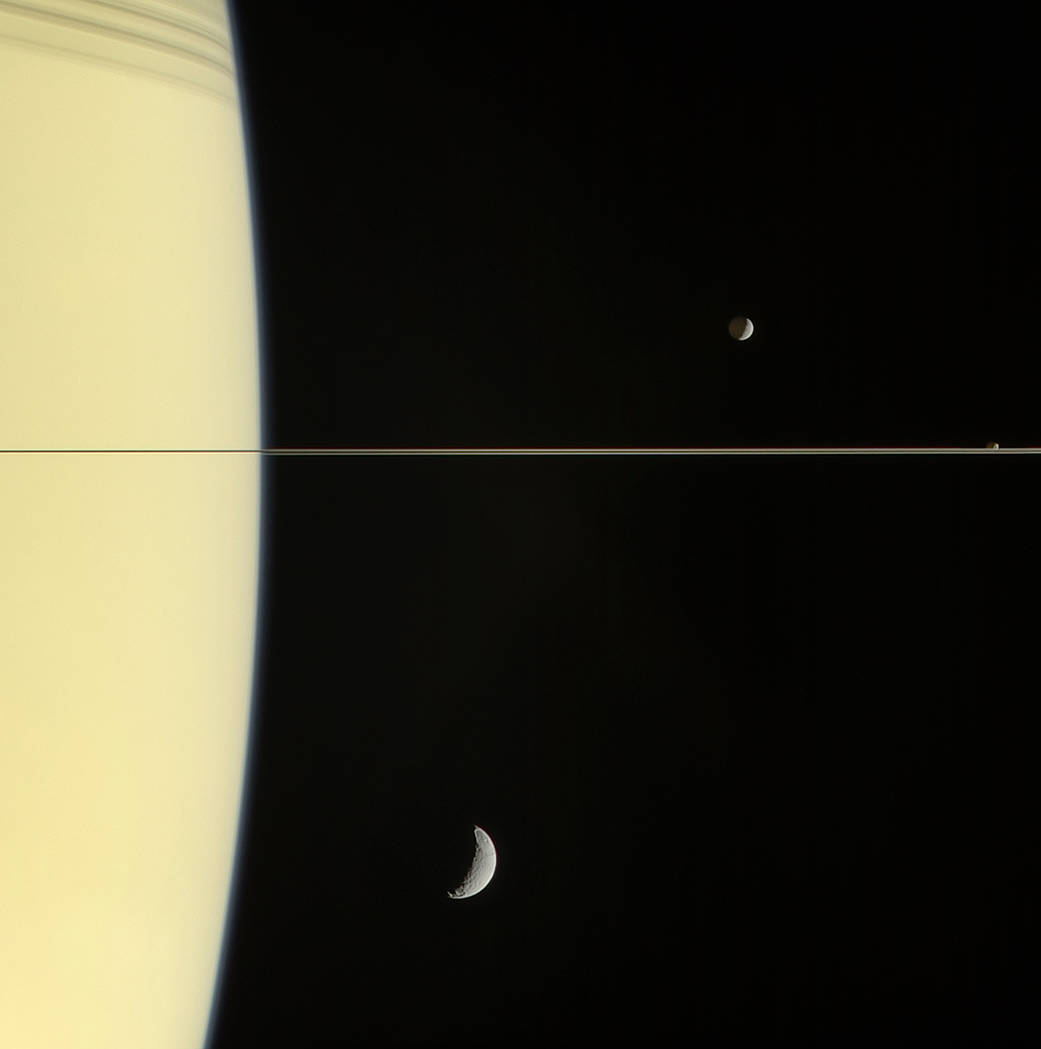Saturn's Gorgeous Rings and 3 Moons Shine in Stunning Cassini Photo

NASA and the Cassini team have given us another gorgeous blast from Saturn's past.
The Cassini spacecraft orbited Saturn from the summer of 2004 until Sept. 15, 2017, when the low-on-fuel probe performed an intentional death dive into the ringed planet's cloud tops.
NASA has continued to release Cassini photos after the spacecraft's demise, and the latest offering, published on Monday (May 7), is a doozy. The view, taken on March 13, 2006, shows Saturn's arcing limb, its razor-thin rings (seen edge on) and three of Saturn's many moons. [In Photos: Cassini's Epic Saturn Mission Ends with Awesomeness]
The satellite Tethys is below the rings, Mimas is above them and tiny Janus appears to sit right on top of the ring plane in the photo, which Cassini took at a distance of 1.7 million miles (2.7 million kilometers) from Saturn.
"'Above' and 'below' the rings is mostly a matter of perspective here. All three moons and the rings orbit Saturn in roughly the same plane," NASA officials wrote in an image description. "The night side of Mimas is gently illuminated by 'Saturnshine,' sunlight reflected from the planet’s cloud tops."
Tethys is the largest of the three moons in the photo, with a diameter of 662 miles (1,066 km). It has a crater, called Odysseus, that’s about as large as Mimas, which is 246 miles (396 km) across. Janus is considerably smaller, with a diameter of about 112 miles (180 km).
Mimas, by the way, is often called the Death Star moon, because one of its big craters gives the icy, battered satellite a striking resemblance to the superweapon in the "Star Wars" films.
Get the Space.com Newsletter
Breaking space news, the latest updates on rocket launches, skywatching events and more!
The $3.2 billion Cassini-Huygens mission — a collaboration involving NASA, the European Space Agency and the Italian Space Agency — launched in October 1997 and arrived in orbit around Saturn on June 30, 2004.
Huygens was a European lander that rode piggyback with Cassini and eventually touched down on the surface of Titan, Saturn's largest moon, in January 2005. This was the first soft landing ever achieved on a body in the outer solar system.
Follow Mike Wall on Twitter @michaeldwall and Google+. Follow us @Spacedotcom, Facebook or Google+. Originally published on Space.com.
Join our Space Forums to keep talking space on the latest missions, night sky and more! And if you have a news tip, correction or comment, let us know at: community@space.com.

Michael Wall is a Senior Space Writer with Space.com and joined the team in 2010. He primarily covers exoplanets, spaceflight and military space, but has been known to dabble in the space art beat. His book about the search for alien life, "Out There," was published on Nov. 13, 2018. Before becoming a science writer, Michael worked as a herpetologist and wildlife biologist. He has a Ph.D. in evolutionary biology from the University of Sydney, Australia, a bachelor's degree from the University of Arizona, and a graduate certificate in science writing from the University of California, Santa Cruz. To find out what his latest project is, you can follow Michael on Twitter.











